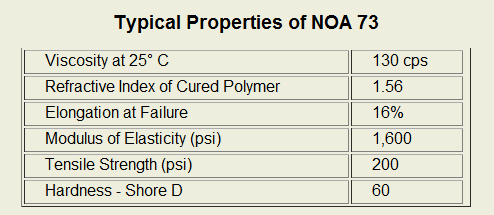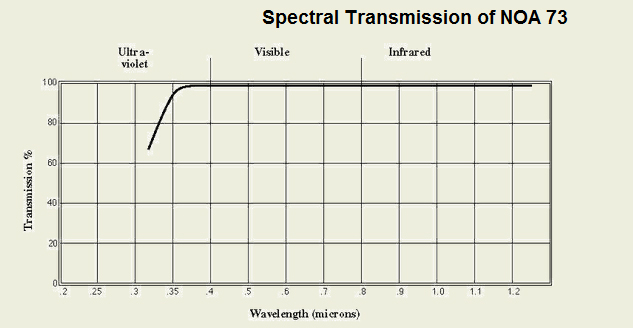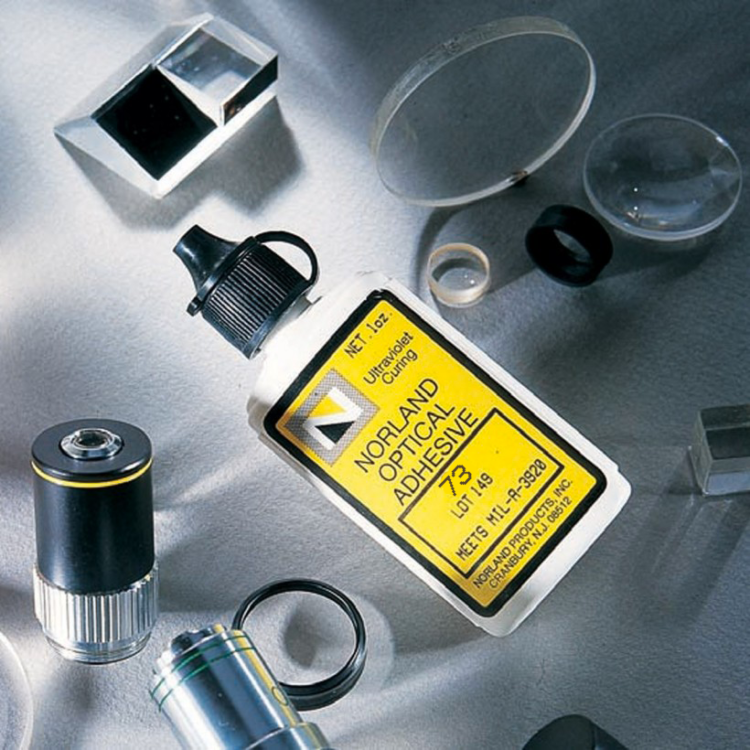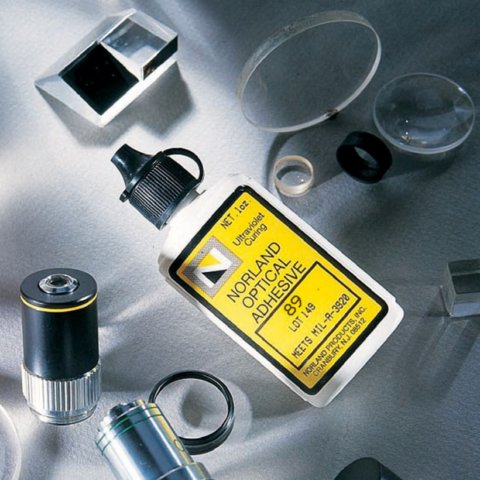Since, it is a one part system and 100% solid, it offers many advantages for bonding optical elements when the bonding surface can be activated with light energy. The use of NOA 73 eliminates premixing, drying or heat curing operations common to other optical adhesive systems.
NOA 73 has more flexibility than any four other adhesives and is recommended for bonding delicate parts or parts where stress may be encountered. Its low viscosity gives it excellent flow characteristics which will allow it to give the thinnest possible bondline.
NOA 73 is cured by ultraviolet light, with maximum absorption between the range of 350-380 nanometers. The recommended energy required for full cure is 4 Joules/sq. cm of long wavelength UV light. The cure is not inhibited by oxygen, and hence any areas in contact with air will cure to a non-tacky state.
In most optical applications, curing is done in two steps. First a short exposure, or precure, is used. This cures the adhesive enough to allow it to be handled without disturbing the alignment and keeps the number of alignment fixtures to a minimum. At this time, parts can be inspected and excess adhesive can be cleaned up with an acetone or alcohol moistened cloth. Any rejected pieces are most easily separated at this stage. Cure is completed by exposure for the remainder of the cure time. A general rule is that full cure will take 20 times the precure time using the same intensity light source.
The NOA bonds can be separated in chlorinated solvent such as methylene chloride. The bonded area must be soaked in the solvent and normally will separate overnight if only precured. Longer times may be necessary depending upon the extent of the cure and the size of the bond area.
NOA 73 has an adhesion promoter in it that provides maximum adhesion and moisture resistance when used in glass, glass-filled or ceramic bonding applications. The adhesion promoter begins working after the cure and will provide the extra strength after 1 week at room temperature. This can be accomplished more quickly by warming the optics to 50°C for 12 hours. NOA 73 bonds will initially withstand -15° C to 60°C and -60° C to 90°C after aging.

The shelf life of the liquid material is at least 4 months from the date of shipment. Material should be stored ina cool (5-22 deg C) dark place in the original container. If refrigerated, allow the adhesive to come to room temperature prior to use.
Care should be taken in handling this material. The Material Safety Data Sheet should be read for this product as well as for any associated products such as alcohol, acetone or methylene chloride. Prolonged contact with the skin should be avoided and affected areas should be washed thoroughly with copious amounts of soap and water. If the adhesive gets into eyes, flush with water for 15 minutes and seek medical attention. Use the material in a well ventilated area, otherwise a NIOSH approved organic vapor mask is recommended.



